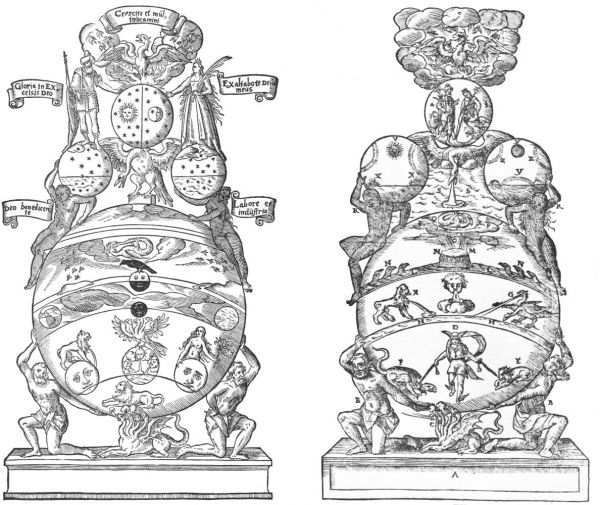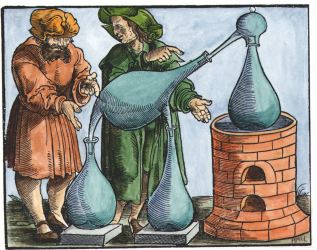In Andreas Libavius' Commentariorum alchymiæ, Frankfurt, 1606 there are a series of emblematic woodcuts contained in a section of the Philosophers' Stone.
Two of these are interesting and yet puzzling. On a superficial view they are very similiar in structure, but when one examines the symbolic components in depth, they obviously are emblematising entirely different ideas. The imagery in places is so very different between the two emblems. I wonder what the source was for these two emblems. Were they entirely devised afresh as illustrations for Libavius' text, or were they taken from some earlier manuscript source ?
Attached Image (viewed 3514 times):

|

